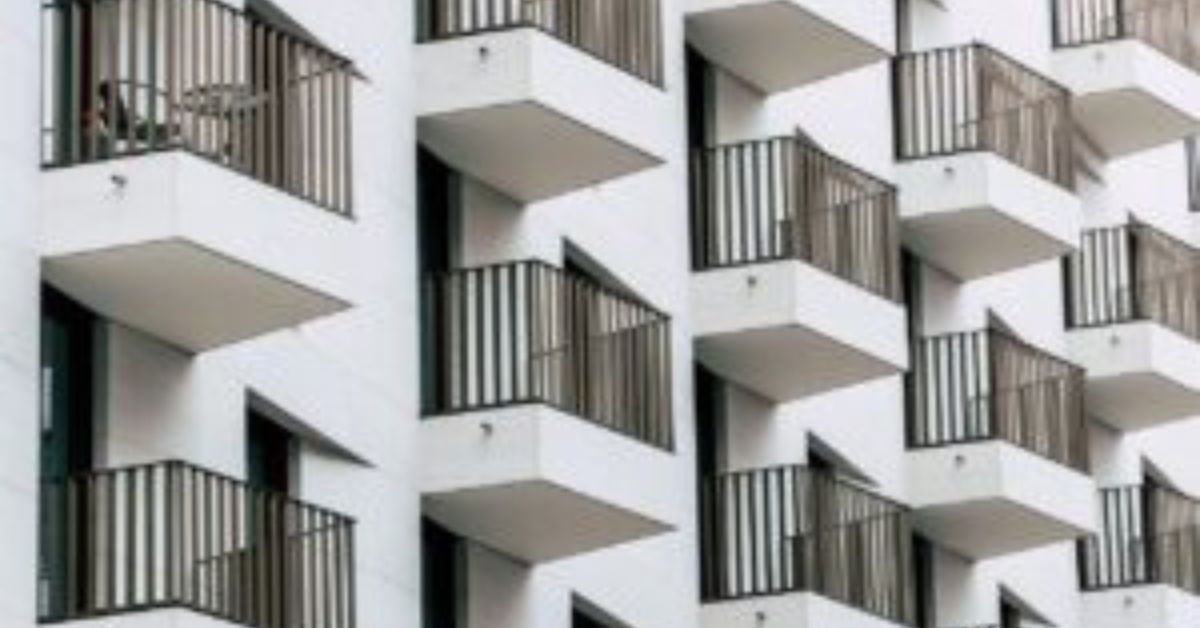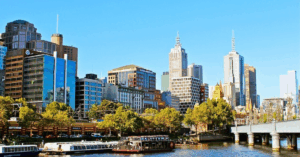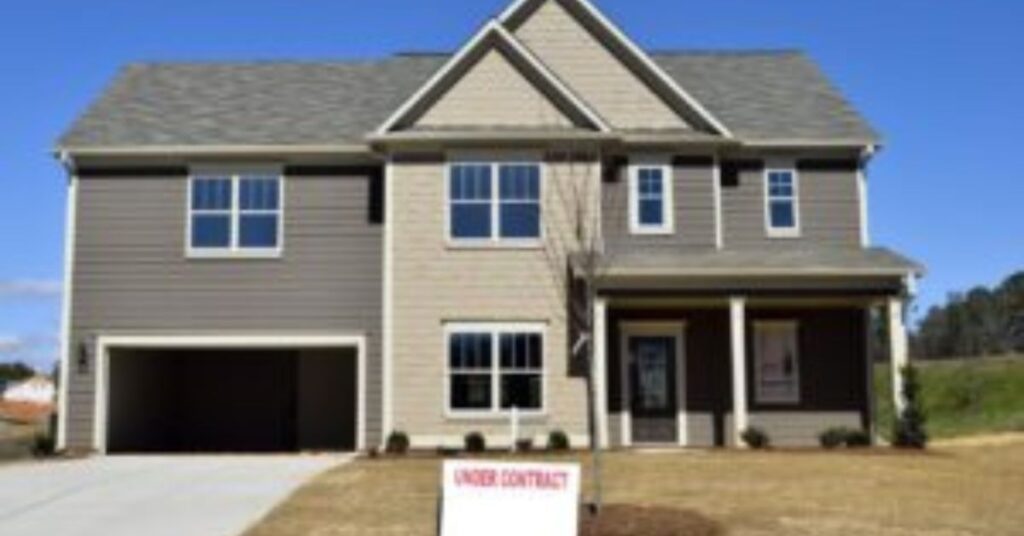Melbourne’s property market is at a bit of a crossroads, and understanding apartment growth is key to figuring out where things are headed. For a while there, prices were a bit sluggish, especially in 2024. But things are starting to shift. We’ve seen a few months of solid price increases already this year, which is a good sign after a tough period. This turnaround suggests now might be a smart time to look at investing, especially as interest rates are expected to ease.
Why Apartment Growth Melbourne Matters Now
It’s not just about prices going up, though. The whole city is growing. We’ve got a booming population, with people flocking here for jobs and a better lifestyle. This surge in people means more demand for places to live, and that’s where apartments come into play. The government’s also trying to help by making it easier to build more housing, particularly around transport hubs. They’ve even cut stamp duty on new apartments for a year, which should make them more appealing to both builders and buyers.
However, it’s not all smooth sailing. Building new homes has actually slowed down, especially apartments. This means we’re likely to see even less supply coming onto the market soon. When you’ve got more people wanting homes and fewer homes being built, prices tend to go up. It’s a simple supply and demand thing, really.
The current situation in Melbourne is a bit like a pressure cooker. Low vacancy rates, high rents, and a growing population are all pushing the market. While it’s tough for renters right now, it points to a strong underlying demand for housing.
So, why does apartment growth matter now? Because it’s a sign of the city’s health and its future direction. It’s about meeting the needs of a growing population and understanding the economic forces at play. Keeping an eye on where apartments are being built and how they’re performing can give you a good idea of which areas are likely to see more price movement. It’s a complex picture, but one that’s definitely worth paying attention to if you’re thinking about property in Melbourne. Understanding the market conditions that significantly influence rental demand is a good starting point.
Current Market Snapshot: Where Apartment Growth Melbourne Is Occurring
Melbourne’s property scene is definitely buzzing, especially when it comes to apartments. We’re seeing a real shift, with prices starting to climb again after a bit of a dip last year. It’s not just a general upswing; certain areas are really standing out.
The inner and middle-ring suburbs, particularly those with good appeal to owner-occupiers and where new homes are a bit scarce, are showing the most promise for growth. This isn’t surprising, given the overall undersupply of housing in Melbourne. Building approvals have been pretty low, and with migration picking up and rental vacancies hitting record lows, the demand is just outstripping what’s available.
Here’s a quick look at what’s happening:
- Price Recovery: After a tougher 2024, Melbourne’s home prices have seen four months of solid growth in 2025. This turnaround suggests the market is finding its feet again.
- Rental Crisis: Vacancy rates are sitting around 1.5%, which is well below the 2-2.5% typically considered balanced. This tight rental market is a big factor pushing up demand for all types of housing, including apartments.
- Flight to Quality: Buyers are being quite selective. Properties that are considered ‘A-grade’ or ‘investment-grade’ are in high demand and holding their value well, while others are taking longer to sell.
The current market conditions in Melbourne present a unique opportunity. While affordability remains a concern for many, strategic investment in areas with strong underlying fundamentals, like good job prospects and infrastructure, is key. The city’s long-term outlook remains positive, supported by population growth and a diverse economy.
It’s interesting to note that while cheaper properties saw stronger growth in the past couple of years, the focus is now shifting. The government’s recent initiatives, like stamp duty reductions for off-the-plan purchases and streamlined planning for multi-storey developments in key areas, are also aimed at stimulating supply and making certain types of apartments more attractive. This could influence where apartment growth Melbourne really takes off in the coming years. We’re seeing a clear trend where median apartment rents are expected to keep rising across the board.
Demand Drivers Behind Apartment Growth Melbourne

It feels like everyone’s talking about Melbourne’s housing market lately, and for good reason. A few big things are pushing apartment growth, and they’re all interconnected.
First off, there’s the infrastructure boom. We’re seeing massive projects happening all over the place, from new train lines to upgraded roads and public spaces. These aren’t just about making the city look nicer; they’re designed to make it easier for people to live and work here, and that naturally draws more people in. When you make a place more accessible and convenient, more people want to be there, plain and simple. This is a big part of why Australia is experiencing a migration surge, though underlying issues like policy inertia and insufficient investment in housing also play a role.
Then you’ve got migration. Melbourne’s population is growing, and a lot of that is thanks to people moving here from overseas, but also from other parts of Australia. More people mean more demand for places to live, and with a lot of new arrivals, apartments often become the go-to option, especially in established areas or near those new infrastructure hubs.
And let’s not forget the rental shortage. The vacancy rates in Melbourne are incredibly low right now. It’s getting harder and harder to find a place to rent, and when you do, the prices are pretty steep. This situation is a direct result of demand outstripping supply. It’s a tough spot for renters, for sure, but it also means that the rental market is incredibly tight.
Here’s a quick look at how things are shaping up:
- Low Vacancy Rates: Melbourne’s rental vacancy rate is sitting around 1.5%, which is well below the 2-2.5% typically considered a balanced market.
- Strong Population Growth: Victoria’s population jumped by over 183,000 people in the 12 months to March 2024, driven by both overseas and interstate migration.
- Infrastructure Investment: Significant public and private investment in transport and urban development is making Melbourne more attractive and accessible.
The combination of these factors – more people arriving, better infrastructure making the city more liveable, and a severe lack of available rental properties – creates a perfect storm for apartment demand. It’s a cycle where each element feeds into the next, pushing up the need for new housing solutions.
This pressure cooker environment means that developers and investors are looking closely at where they can build and what kind of properties are most needed. It’s not just about building more; it’s about building in the right places to meet this surging demand.
Supply Constraints And Mis-Match: How They Fuel Apartment Growth Melbourne
It’s a classic case of supply not keeping up with demand, and it’s really pushing up prices for apartments in Melbourne. We’re seeing fewer new homes being built, especially apartments, compared to a year ago. This slowdown in construction means there’s just not enough new stock hitting the market to house everyone who wants to live here.
Think about it: Victoria’s population is growing super fast, with people moving in from overseas and even from other states. All these new residents need somewhere to live, and when there aren’t enough places available, competition gets fierce. This scarcity is a big reason why apartment prices are on the rise.
Here’s a quick look at the construction numbers:
- Dwellings under construction in Victoria: Down 11% from last year.
- High-density apartment projects: Seeing the biggest drop in construction.
- New housing completions in 2024: Likely the lowest in a decade.
On top of fewer new builds, the planning process for new developments can be slow. While the government is trying to speed things up in certain areas, it takes time for these projects to get off the ground and actually add to the housing supply. This gap between how many homes we need and how many are actually being built is a major driver of price increases.
The rental market is also feeling the pinch. Vacancy rates are incredibly low, meaning it’s tough for people to find a place to rent. This pressure on renters often pushes them towards buying, adding even more demand to the sales market. When you can’t find a rental, buying might seem like the only option, even if it’s a stretch.
This whole situation creates a bit of a bottleneck. Developers face challenges, fewer homes are completed, and demand keeps climbing. It’s a recipe for higher prices, especially for apartments in sought-after areas.
Suburbs Showing Strong Signs Of Apartment Growth Melbourne And Why

Alright, so where’s the action happening in Melbourne’s apartment market? It’s not just about the flashy inner-city towers, though they get a lot of attention. We’re seeing some really interesting shifts in areas that are becoming more accessible and desirable.
The middle-ring suburbs are definitely worth a closer look. Think places like Mount Waverley, Glen Waverley, Mitcham, Blackburn, and Ringwood. These areas are getting a bit of a facelift with better infrastructure and upgrades. They’re still more affordable than the super-inner suburbs, which is a big drawcard for people buying their own homes and for renters. This dual demand is really pushing prices up.
Then you’ve got the west, with suburbs like Essendon and Moonee Ponds. They’re popular because they’re close to the city, have good schools, and plenty of things to do. People like families and young professionals are snapping up properties there.
Down in the south-east, suburbs like Bentleigh and those closer to the bay, such as Cheltenham, Mentone, and Parkdale, are also seeing a lot of interest. They’re gentrifying, meaning they’re getting nicer and more appealing, and that’s attracting buyers and renters.
It’s not just about houses, either. Townhouses are becoming a big deal, especially for young families who want a bit more space than an apartment but can’t quite stretch to a full house. They’re a good middle ground, and investors are noticing.
We’re seeing a trend where established apartments in good spots are getting a second look. These aren’t necessarily brand-new builds, but well-located, two-bedroom places that are family-friendly. Areas with good rental demand, especially from young professionals and students, are seeing renewed interest. Think low-rise buildings with modern touches, close to cafes, transport, and parks.
Here’s a quick rundown of what’s driving this:
- Gentrification and Infrastructure: Areas are improving with better transport links, parks, and local amenities.
- Relative Affordability: Compared to the inner city, these suburbs offer better value, attracting a wider range of buyers and renters.
- Demand for Diverse Housing: There’s a growing need for townhouses and well-located apartments, not just standalone houses.
- Population Growth: Melbourne’s overall growth means more people are looking for places to live, spreading demand into these middle and outer-middle rings.
Risks And Caveats When Targeting Apartment Growth Melbourne Investments
Investing in Melbourne’s apartment market, while promising, isn’t without its potential pitfalls. It’s easy to get caught up in the excitement of growth areas, but a bit of caution goes a long way. Not all apartments are created equal, and location is only one piece of the puzzle.
One significant concern is oversupply, particularly with off-the-plan purchases. Developers might rush to build in popular areas, leading to a glut of similar properties that can depress rental yields and capital growth. This is especially true for high-rise developments, which often struggle to attract quality tenants or command premium prices compared to more boutique options. It’s worth remembering that Melbourne property prices have seen a downturn in recent times, so understanding the current state of the Melbourne property market is key.
Here are a few things to keep in mind:
- Oversupply Risk: Be wary of areas with a high concentration of new apartment developments. A quick look at building approvals can give you a clue about future supply.
- Rental Demand Fluctuations: While the rental market is currently tight, this can change. Consider the long-term desirability of the area for renters – are there good transport links, amenities, and job opportunities nearby?
- Body Corporate Fees: These can significantly eat into your returns. Always factor in strata fees, sinking funds, and potential special levies when calculating your net yield.
- Quality of Build and Management: Poor construction or ineffective building management can lead to ongoing issues and unexpected costs.
It’s also important to look beyond the shiny brochures and understand the actual living experience. Are the common areas well-maintained? Is there adequate parking? What’s the noise like from the street or neighbouring apartments? These factors, while seemingly minor, can impact tenant satisfaction and property value over time.
When considering specific suburbs, avoid those that rely heavily on population growth without corresponding infrastructure development. Areas that are far from established transport hubs or lack essential services might see population increase, but not necessarily strong capital growth. Instead, focus on suburbs with a good mix of owner-occupier appeal and rental demand, often found in inner and middle-ring areas with established amenities.
Strategies For Capitalising On Apartment Growth Melbourne
Alright, so you’re keen on getting a piece of Melbourne’s apartment action, whether you’re looking to buy a place to live or just make a bit of extra cash. It’s not as simple as just picking any old unit, though. You’ve got to be smart about it.
For investors, the game is often about long-term gains. While apartments can offer decent rental yields, they don’t always stack up for capital growth compared to houses. Think about it: a well-located house in a gentrifying suburb might see better price jumps over time. However, if you’re set on apartments, focus on areas with strong rental demand and limited new supply. This is where you might find those sweet spots. The key is to look for properties that are likely to attract quality tenants and hold their value, not just the cheapest option available.
Owner-occupiers have a slightly different lens. Lifestyle, low maintenance, and proximity to amenities often top the list. If you’re buying an apartment to live in, consider how it fits your daily routine. Is it close to work, transport, or the things you enjoy doing? The stamp duty reduction on off-the-plan properties, which started in late 2024, might make new builds more appealing, but do your homework on the developer and the building itself.
Here are a few things to keep in mind:
- Location, Location, Location: This old saying still rings true. Look for suburbs with good transport links, amenities, and a growing population. Areas around new train lines or revitalised precincts often see apartment values climb.
- Property Type Matters: Not all apartments are created equal. Smaller, older units in prime locations might not offer the same growth potential as larger, modern apartments in up-and-coming areas. Consider the floor plan, building facilities, and overall appeal.
- Market Timing: While it’s tempting to jump in, understanding the property cycle is important. Melbourne has seen some price growth recently, but it’s still a good time to buy strategically, especially with interest rates expected to ease. It’s about buying when others might be hesitant.
It’s easy to get caught up in the hype of apartment growth, but a measured approach is best. Don’t just follow the crowd; do your own research. Understand the local rental market, vacancy rates, and future development plans for the area. This due diligence is what separates a good investment from a not-so-good one.
For investors looking for capital growth, it’s often advised to steer clear of high-rise apartments in areas with a lot of new developments. These can suffer from oversupply, which can put a lid on price increases. Instead, think about well-built, smaller apartment blocks or townhouses in areas with solid owner-occupier appeal. This is where you might find a better balance for your investment strategies.
Ultimately, whether you’re buying to live in or to rent out, a smart strategy involves looking beyond the surface. Understand the drivers of growth in specific suburbs and choose a property that aligns with your personal goals and financial situation. It’s about making informed decisions, not just chasing the next big thing.
Forecasts For Apartment Growth Melbourne And Next Move
So, what’s the crystal ball telling us about Melbourne’s apartment market? Well, the signs are pointing towards continued growth, especially as we head into 2026. After a bit of a wobble in 2024, the market’s shown some real resilience, with four months of solid price increases already under its belt this year. Experts reckon this upward trend is set to keep going, with some forecasts suggesting unit prices could jump by over 7% in the next year. That’s a decent chunk of change, adding thousands to the median price.
Melbourne’s property market is shaping up to be a standout performer among the capital cities. This isn’t just wishful thinking; it’s backed by solid fundamentals like strong population growth and significant infrastructure spending. Plus, with interest rates expected to ease, more buyers are likely to jump back in, giving the market a good nudge.
Here’s a quick look at what some are predicting for 2026:
| Capital City | Unit Price Growth Forecast |
| Melbourne | 7.1% |
| Sydney | 6.1% |
| Brisbane | 1.5% |
| Adelaide | 3.7% |
| Canberra | 5.6% |
| Darwin | 7.3% |
| Hobart | 2.7% |
It’s not all smooth sailing, though. While the overall picture looks positive, not every suburb will see the same level of growth. The smart money seems to be on inner- and middle-ring areas that are popular with owner-occupiers and have limited supply. High-rise, off-the-plan apartments, on the other hand, might not be the golden ticket, often facing oversupply issues.
The current undersupply of housing, coupled with a surge in migration and historically low vacancy rates, creates a strong foundation for sustained growth. This imbalance between demand and supply is a key factor that investors should be watching closely.
So, what’s the next move for investors and potential homeowners? It’s about being strategic. Think long-term and focus on properties with good underlying value in desirable locations. Keep an eye on suburbs that are gentrifying or have strong local economies. And remember, while the market is turning, it’s still a good time to get in before prices really take off. The first homebuyer support measures kicking in from 2026 could also add another layer of demand, so that’s something to consider too.
Thinking about what’s next for apartment buildings in Melbourne? We’ve got the inside scoop on future growth and what it means for your next big move. Want to know more about the Melbourne apartment scene? Visit our website for all the details!
Frequently Asked Questions
What’s making Melbourne’s apartment prices likely to increase?
Several things are pointing towards apartment prices going up in Melbourne. We’re seeing a shortage of places to rent, which pushes up demand for buying. Plus, lots of new people are moving to Melbourne, and big building projects are planned, especially near train stations. These factors combined usually lead to higher property values.
Are outer suburbs still a good bet for apartment growth?
While outer suburbs might seem cheaper, they often don’t have as many handy things like shops, transport, and schools. This can make it harder for property values to grow a lot over time. It’s usually better to look at areas closer to the city or in suburbs that are getting better infrastructure and services.
Which types of properties are expected to do well in Melbourne?
Properties like townhouses and villa units in suburbs closer to the city are becoming quite popular, especially for families and couples who want more space than an apartment but can’t afford a big house. Also, well-located apartments in good areas that are close to things people need are seeing more interest.
Are there any areas in Melbourne to be cautious about for property investment?
It’s wise to be careful about areas with very high crime rates, as this can make it harder to find renters and can affect property values. Also, some very new outer suburbs might grow in population but not necessarily see big jumps in property prices because they lack important services and transport.
When is the best time to invest in Melbourne’s property market?
Many experts believe that Melbourne’s property market is currently undervalued and could be set for a boom. With interest rates expected to fall and strong population growth, now might be a good time to invest, especially in areas that are improving and have limited housing supply. Acting before more people move to the city could be beneficial.
What is the government doing to help the property market?
The Victorian government is trying to encourage more building. They’ve reduced stamp duty for new apartments and townhouses for a year, which makes them cheaper to buy. They are also making it easier to build more homes in areas near public transport to help meet the demand.










